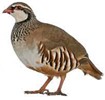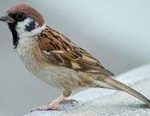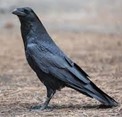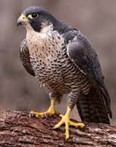Class Pages
At Khalsa Primary School each class is known by the birds that are mentioned in Sri Guru Granth Sahib Ji. Each bird has its own symbolic meaning and are used as a metaphor for the actions we commit as human beings. At the start of each academic year children learn the attributes and the symbolic meaning of each Bird of Sikhi, which is reinforced throughout the year to relate to the Sikh Ethos and the significance of the birds in the Sikh faith.
Nursery
In Sikhi, the peacock is seen as a symbol of royalty and beauty. Guru Gobind Singh Ji created the Taus inspired by the peacock. The shape of the Kalgi the Gurus wore was inspired by the eyes within the tail display. The feathers are seen of great value as the peacock only naturally molts enough feathers to produce 2-3 Chaur Sahibs (royal whisks) a year, which can be seen in some Gurdwaras.
The peacock of the mind chirps, and receives the Word of the Shabad, in its mouth;
the Ambrosial Nectar of the Lord rains down, and the Sovereign Lord King is met.
Raag Gauree – Guru Raam Daas Ji – Sri Guru Granth Sahib Ji – Ang 172
In this Shabad, Guru Ji uses the very vivid and dramatic image of the peacock to help us see Gurbani in a more 4-dimensional way. Guru Ji likens the relationship of the peacock’s love of rain to the Gur Sikhs love of Amrit. This entire Shabad is a description of the absolute pure Anand we can receive from Naam.
From the pangti (line) mentioning the peacock what becomes apparent is also the relationship of the mind and the mouth. When we put the words of Gurbani into our mouth they will make the mind beautiful, like the peacock displaying its tail. Our mouths are reflection of our minds, if we drink the Amrit from Gurbani during our Nitnem and truly feel the Gurbani within our soul and connect, our words will become sweet and pure, just like the Amrit we receive.
Reception
Duck = murgaaee ਮੁਰਗਾਈ
The Murgaaee is mentioned a couple of times in Gurbani. Guru Ji uses the duck as a symbol of how to live amidst Maya (the temporary world and things) and too remain clean and pure by keeping the 5 values intact.
The lotus flower floats untouched upon the surface of the water, and the duck swims through the stream;
with one’s consciousness focused on the Word of the Shabad, one crosses over the terrifying world-ocean. O Nanak, chant the Naam, the Name of the Lord.
Raag Raamkalee – Guru Nanak Dev Ji – Sri Guru Granth Sahib Ji – Ang 938
The pangti (line) above is an answer to the Yogi’s question of how one can cross over the difficult and terrifying ocean (world), meaning how should one live their life amongst all the negativity. Guru Ji answers by using a two-part metaphor with the Murgaaee being one part. They say just as the lotus floats on top of the water and remains different, and the same way a duck remains in the water without its feathers becoming wet this is the way the saints/Sikhs/the holy should remain detached. So, if we see the world as an ocean it may occasionally become unstable, unexpected and unfamiliar beneath us however if we keep our focus on the state of the eternal permeating Shabad (rhythm/Hukam), we shall remain stable. Chanting the name of ‘The One’ through Gurbani, will become our protective barrier just like the same special coating over the feather of the duck that stop it from getting wet.
Parrot
= ਤੋਤ tot / ਸੂਆ sooaa / ਸੂਹਟੁ soohat
The parrot is used as a metaphor in different ways in Gurbani. The story of Ganika the lustful lady is also mentioned often. She taught a parrot to say God’s Name which caused her to also repeat every day. Because of this she was liberated in her final moments.
Ganika was saved, when her parrot uttered the Lord’s Name.
Raag Basant – Guru Arjan Dev Ji – Sri Guru Granth Sahib Ji – Ang 1192
We can learn many things from the story of Ganika. One lesson is, no matter how bad we think we are, how many wrong turns we think we have made in life, the sanctuary of Waheguru is never unattainable. If we come with our head in our hands to Guru Ji with hopes from deep within our heart and become the dust of the Holy, then our life accounts shall be re-written and we will be liberated.
You are never, not good enough to start on this path. Begin by reciting daily Waheguru, Waheguru, Waheguru.
Year 1
Flamingo = ਕੂੰਜ koonj
A violet coloured bird with a long neck, flies to hot countries at the beginning of winter and moves back to the cold ones in summer.
Using the koonj (flamingo) and its love and attachment to its offspring as an illustration, Guru Ji is drawing our attention to where our mind should be most of the time. We may be actively engaged in an activity (as the flamingo is constantly thinking of their offspring) but the mind is constantly thinking of the Guru and remembering Waheguru in all that they do.
The white flamingo circles through the sky,
but she keeps her young ones in her mind; she has left them behind, but she constantly remembers them in her heart.
In just the same way, the True Guru loves His Sikhs. The Lord cherishes His Gur Sikhs, and keeps them clasped to His Heart. ||2||
Raag Gauree – Guru Raam Daas Ji – Sri Guru Granth Sahib Ji – Ang 168
Rainbird = ਸਾਰਿੰਗ saaring | ਚਾਤ੍ਰਿਕ chaatrik
The Jacobin cuckoo is a member of the cuckoo family. In Gurbani translations it is referred to as the Rainbird as it often appears just before the rainy season. Its crest is said to look like a second beak upon its head and when it rains it looks like its drinking the rain. It is also referred to in translations as the ‘song bird’ as its call is quite distinctive and sounds like pee-o pee-o which can translate to drink-drink or my love-my love.
The Lord, Har, Har, is the raindrop; I am the Rainbird, crying, crying out for it.
O Lord God, please bless me with Your Mercy, and pour Your Name into my mouth, even if for only an instant. ||1||
Raag Dhanaasree – Guru Raam Daas Ji – Sri Guru Granth Sahib Ji – Ang 668
This whole Shabad describes the immense amount of love we should aspire to have within us for Waheguru/Guru Ji and the Rainbird is used to describe it. When the Gur Sikh becomes saturated with love it intensifies their faith and devotion. By meeting Guru Ji (going to the Gurdwara), our mind is filled with intense joy and excitement like when the chatrik first sees the rain clouds. The chatrik then starts to sing and repeat ‘my-love and asks for a drink’ just as we sing and repeat, with love, Waheguru and Gurbani in the Gurdwara during kirtan (devotional songs) and paath (prayers). Guru Ji then hears our love and showers bliss and spiritual gifts upon us.
Year 2
Partridge = ਚਕੋਰ chakor
Gurbani refers to the Grey Francolin which is a member of the Partridge family. Sadly, in old times, partridges were kept by Kings to test their food for poison. It was said that if there was poison in the food the partridge’s eyes would turn red and it would die instantly. They are often domesticated and kept as pets as they are extremely loyal and confiding. In Gurbani the partridge is said to love the moon and is forever longing for it throughout the night.
If You are the moon, then I am the partridge in love with it. ||1||
Raag Sorath – Bhagat Ravi Daas Ji – Sri Guru Granth Sahib Ji – Ang 658
My mind loves You, as the partridge loves the moon,
Raag Bilaaval – Guru Arjan Dev Ji – Sri Guru Granth Sahib Ji – Ang 837
This whole Shabad is about being in true love with the One. The partridge is used as a metaphor for being the Gur Sikh and the Moon being Waheguru. Using this example, it can be said that the Gur Sikh is only ever found singing the praises of the One, even throughout the night.
Sparrow = ਚਿੜੀ chirree
Bhai Veer Singh ji gives the translation of chirree to be a small bird that lives in houses. In South Asia the most common small bird that lives in houses is the sparrow.
The sparrow appears twice in Guru Granth Sahib Ji and is shown as an example of humble and saintly behaviour in the below Shabad.
The sparrow eats only half a grain, then it flies through the sky and chirps.
The good sparrow is pleasing to her Lord and Master, if she chirps the Name of the Lord.
Raag Malaar – Guru Nanak Dev Ji – Sri Guru Granth Sahib Ji – Ang 1286
Guru Ji compares the lifestyle of the elephant to the humble sparrow. They say the bird eats just half a seed then flies through the air and sings. Now take this as the description of the life of the saint. They consume very little but yet they demonstrate almost miraculous abilities and speak sweet words. Then in the next line Guru Ji reminds us that performing miracles and sweet words alone aren’t enough. We must remember to keep repeating and chanting Waheguru, Waheguru, Waheguru constantly.
Year 3
Heron = ਬਗੁਲ bagul / ਬਗੁਲਾ bagulaa / ਬਗੁ bag
The heron is primarily used in Gurbani to demonstrate hypocrisy. It sits on the banks of the river pretending to be asleep on one leg but is actually waiting for its next victim to pounce upon. The heron is found usually on banks of rivers standing on one leg pretending to sleep while hunting. Guru Ji often compares it to ‘holy men’ who stand on one leg in focused meditation just to fool people (the victims) and obtain gifts from them.
The heron appears to be meditating, but it is concentrating on the water. ||1||
Why do you practice meditation and chanting,
when your mind is not pure? ||1||Pause||
Raag Aasaa – Bhagat Naam Dev Ji – Sri Guru Granth Sahib Ji – Ang 485
You read your books and say your prayers, and then engage in debate;
you worship stones and sit like a heron, pretending to be in Samaadhi (deep meditation).
Raag Aasaa – Guru Nanak Dev Ji – Sri Guru Granth Sahib Ji – Ang 470
Ruddy Shelduck = chakvi (female) ਚਕਵੀ | chakva (male) ਚਕਵਾ | chakaee (plural) ਚਕਈ
The Ruddy Shelduck is a member of the duck family. They famously pair for life and in Hindu and Buddhist traditions they are said to call to each other in love at night from opposite sides of the bank. Guru Ji uses the Chakvi to demonstrate the Gur Sikhs love for Guru/Waheguru. Guru Ji states that the Chakvi’s true love is with the sun and calls out for it at night, so she can be reunited with her worldly love.
The chakvi duck does not long for sleepy eyes; without her beloved, she does not sleep.
When the sun rises, she sees her beloved with her eyes; she bows and touches his feet. ||1||
Raag Malaar – Guru Nanak Dev Ji – Sri Guru Granth Sahib Ji – Ang 1273
Guru ji uses the Chakvi to demonstrate the Gur Sikhs love for Guru/Waheguru. What is also evident from this particular Shabad is how it describes the lifestyle of the Gur Sikh as well. There are Gur Sikhs who chant ‘Waheguru’ so much that even throughout the night and sleep they can be heard still chanting on their breath. Then as the sun rises the first thing they see with their eyes is Guru Ji – Gurbani. After which they conclude with an Ardaas and bow at the end to touch their head on the floor.
Year 4
Crane = ਕੂੰਜ koonj
Cranes often appear in groups and on farms. They can cause many problems for the farmers.
O my mind, remain awake and aware night and day, and think of the Lord.
Protect your crops, or else the birds shall descend on your farm. ||1||Pause||
Siree Raag – Guru Amar Daas Ji – Sri Guru Granth Sahib Ji – Ang 34
Here Guru Ji is using the metaphor of the Crane to explain that if you do not think of the Lord, then like the Crane taking crops from the farm, your crops (being good deeds and spiritual profit) will also be taken away by the Crane which is Maya (material things that lead you away from God).
Kite = ਇਲ il
We sometimes refer to an eagle as an ‘il’ however its more likely that it refers to the more common Indian black kite. They are often seen circling in the air above where a dead animal is found. Different to the eagle, which is more of a predator and is rarely a scavenger. This can be backed up with the description of the bird given in Gurbani.
Roaming and wandering in the ten directions, over water, mountains and forests
– wherever the kite sees a dead body, he flies down and lands. ||2||
Raag Gauree – Guru Arjan Dev Ji – Sri Guru Granth Sahib Ji – Ang 322
The salok by Guru Ji uses the Kite as a metaphor for the mind which leaves the comfort of its nest in the sanctuary of Waheguru, and flies/wanders around and around until it sees bad things (the dead body) such as slander, greed, anger, etc. and then feeds off of it. Guru Ji then gives us the solution to this problem. Briefly listed these are, living truthfully, understanding Waheguru is always near us, constantly reciting Waheguru’s name, not hurting others around you, become lower than all of those around you and do parchar and explain to all the benefits of repeating the name of ‘the One’ who lifts up the lowly.
Year 5
Raven = ਕਾਗ kaag / ਕਾਗਾ kaagaa / ਕਾਗਉ kaagao
The raven represents death. You see the beautiful metaphor painted in Gurbani when you understand the kaag (raven) to be death. As we get older, death starts to take hold of parts of our body through sickness and fatigue. Guru ji strongly advises us while were still young and able, to give up this body to Waheguru. There is no better time than NOW to partake in seva and perform good actions.
The ravens have searched my skeleton, and eaten all my flesh.
But please do not touch these eyes; I hope to see my Lord. ||91||
O raven, do not peck at my skeleton; if you have landed on it, fly away.
Do not eat the flesh from that skeleton, within which my Husband Lord abides. ||92||
Salok Fareed Jee – Bhagat Sheikh Fareed Ji – Sri Guru Granth Sahib Ji – Ang 1382
Crow = ਕਾਉ kaao / ਕਊਆ kaooaa
Guru Ji uses the crow as a symbol of those who doubt naam and spirituality. They move from one place to another like the crow moves from one house that is deserted to another, as they are spiritually lost. Their cries even begin to sound like the cawing of crows. Guru Ji also uses the symbol of a group of crows as bad actions.
The earth is beauteous, and the sky is lovely, chanting the Name of the Lord.
O Nanak, those who lack the Naam – their carcasses are eaten by the crows. ||2||
Raag Saarang – Guru Arjan Dev Ji – Sri Guru Granth Sahib Ji – Ang 1247
In the Shabad, Guru Ji says that those who jap (chant) har naao (the Lord’s name) their thoughts (earth) and heart/inside (sky) becomes beautiful. However, those who do not chant the Lord’s name and are not in that spiritually awakened state (Naam), their body begins to be attacked by bad actions and thoughts. These then cause physical, mental and spiritual pain. One of our biggest supports in our life is chanting the name of the One/Waheguru. Unlike modern ideas of medicine that looks at solving problems afterwards, Guru Ji, our doctor, has given us a preventative treatment to take care of our mind, body and soul before problems set in. Do not move from house to house looking for the next latest fad or shortcut like a crow. Start meditating now even if it’s just 10-20mins a day and stick with it with full faith and love for Guru Ji. You will see the results.
Year 6
Hawk/Goshawk = ਬਾਜ baaj/baaz | ਬਾਸਾ baasaa/baashaa | ਕੁਹੀ kuhee (shikra – little goshawk)
The Hawk is known as the Baaj. Although it is a term used generally for the species, it is most likely referring to the Goshawk. There are several varieties of Goshawk across South Asia such as the Shikra which is said to be easier to train for hunting than the Falcon. It is used to illustrate death coming down upon the human just as the Hawk comes down.
You move things from here to there, like the hawk swooping down on the flesh of its prey.
You are blind – you have forgotten the Great Giver. You fill your belly like a traveller at an inn. ||1||
Raag Saarang – Guru Arjan Dev Ji – Sri Guru Granth Sahib Ji – Ang 1216
Gurbani uses the Baaj to illustrate how the human beings are killing themselves working so hard, and gives the example of the human seeming like a Baaj swooping down on an animal and taking it up into different trees to eat, just as the human goes from place to place to earn a profit. The word ‘ਝਾਟੁਲੀ – jhhaatulee’ is the lure which the falconer uses to fool the bird to act on command. This word is quite important as it shows the Baaj is being fooled. Guru Ji then tries to remind us of our true journey because we have become blind (our eyes are closed – we haven’t become awakened beings) and then say like a traveler, we have stopped at some roadside services and are filling our stomachs up whilst forgetting about our journey. We’re all being played like animals as part of a circus by a ringmaster (death) with his lure (maya).
Falcon = ਸੀਚਾਨਾ seechaanaa | ਚਰਗ charag
Guru Ji is most likely referring to the Red-necked Falcon in this pangti (line). Although they are from the savannahs of Africa, they do migrate to India once a year in large numbers. This specific breed is thought to be common among Indian falconers who set them upon small birds for crowd entertainment purposes. The Charag is the Saker Falcon and has been used in falconry for thousands of years however it is now endangered in Central Asia where thousands are caught and sold illegally in the Middle-east. Guru Ji uses the example of the Falcon, and its incredible speed in flight, to demonstrate the suddenness of how death can fall upon those who are completely wrapped up in Maya (the temporary world and things) and the ego.
Think of the falcon preying on the birds, and the net in the hands of the hunter.
Those who are protected by the Guru are saved; the others are caught by the bait.
Without the Name, they are picked up and thrown away; they have no friends or companions. ||3||
Siree Raag – Guru Nanak Dev Ji – Sri Guru Granth Sahib Ji – Ang 55
This Shabad revolves around the metaphor of a fish, which is why, the second part of the first line (in the image) talks of the hunter with his net. Guru Ji reminds us that death can pounce upon any of us just as the Seechaanaa (death) swoops down upon a bird (us) unaware, and how a hunter (minion of death) throws his/her net (death) over his/her target (us). The Seechaanaa here is to depict the suddenness of death. Only those who Guru Ji protects can be saved from death, all the others take the bait (Maya) and are then caught (by death). A healthy dose of fear is always good for us, it can help keep us disciplined, focused and detached.














